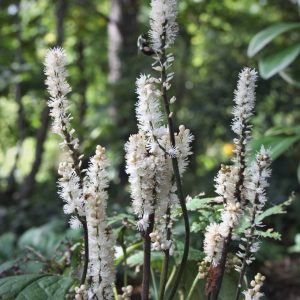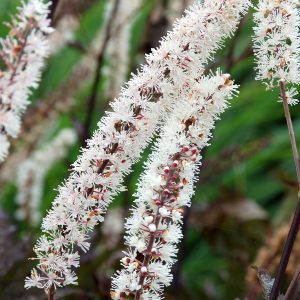Actaea, commonly known as Bugbane or Snakeroot, is a stunning perennial known for its tall spikes of fragrant flowers and attractive foliage. Follow this comprehensive planting guide to ensure the successful establishment and growth of your Actaea plants.
Selecting a Planting Site
Light Requirements: Choose a planting site with partial to full shade. Actaea prefers filtered sunlight and can tolerate deep shade, making it an excellent choice for woodland gardens.
Soil Conditions: Plant in well-draining, organically rich soil. Amending heavy or clay soils with organic matter will improve drainage and fertility.
Planting Time
Optimal Timing: Plant Actaea in the spring or early autumn. This allows the plant to establish its root system before extreme weather conditions.
Planting Process
Digging Holes: Dig holes that are twice as wide as the root ball of the Actaea plant.
Plant Depth: Place the plant in the hole at the same depth it was in the container or nursery. Backfill with soil and water thoroughly.
Spacing: Plant multiple Actaea plants about 18 to 24 inches apart to allow for adequate air circulation.
Watering
Initial Watering: Provide ample water immediately after planting to help the roots settle. Keep the soil consistently moist during the first growing season.
Established Plants: Once established, Actaea is moderately drought tolerant. Water during dry periods and avoid waterlogged conditions.
Mulching
Mulch Benefits: Apply a layer of organic mulch around the plants to conserve soil moisture, suppress weeds, and regulate soil temperature.
Mulch Depth: Maintain a 2–3-inch layer of mulch but avoid piling it against the base of the plant.
Fertilisation:
Moderate Fertilisation: Actaea generally does not require heavy fertilisation. Apply a balanced, slow-release fertiliser in the spring to support healthy growth.
Avoid Excessive Nitrogen: Avoid high-nitrogen fertilisers as they may promote excessive foliage at the expense of flowering.
Pruning
Minimal Pruning: Actaea is a low-maintenance plant. Remove spent flowers and yellowing foliage to maintain a tidy appearance.
Autumn Clean up: Trim back the plant in late Autumn or early spring to remove dead stems and encourage new growth.
Pest and Disease Management
Pest Resistance: Actaea is relatively resistant to pests. Monitor for any signs of pests and treat them promptly.
Good Air Circulation: Ensure proper spacing between plants to promote good air circulation, reducing the risk of fungal diseases.
Division
Periodic Division: Every 3-5 years, consider dividing mature Actaea plants to rejuvenate them. Spring or Autumn is the best time for division.
Replanting: Lift the clumps, divide them, and replant healthy sections in well-prepared soil.
By following these guidelines, you’ll establish a healthy and thriving Actaea garden. Adjust care based on your specific growing conditions and enjoy the beauty of this unique and elegant perennial in your landscape











